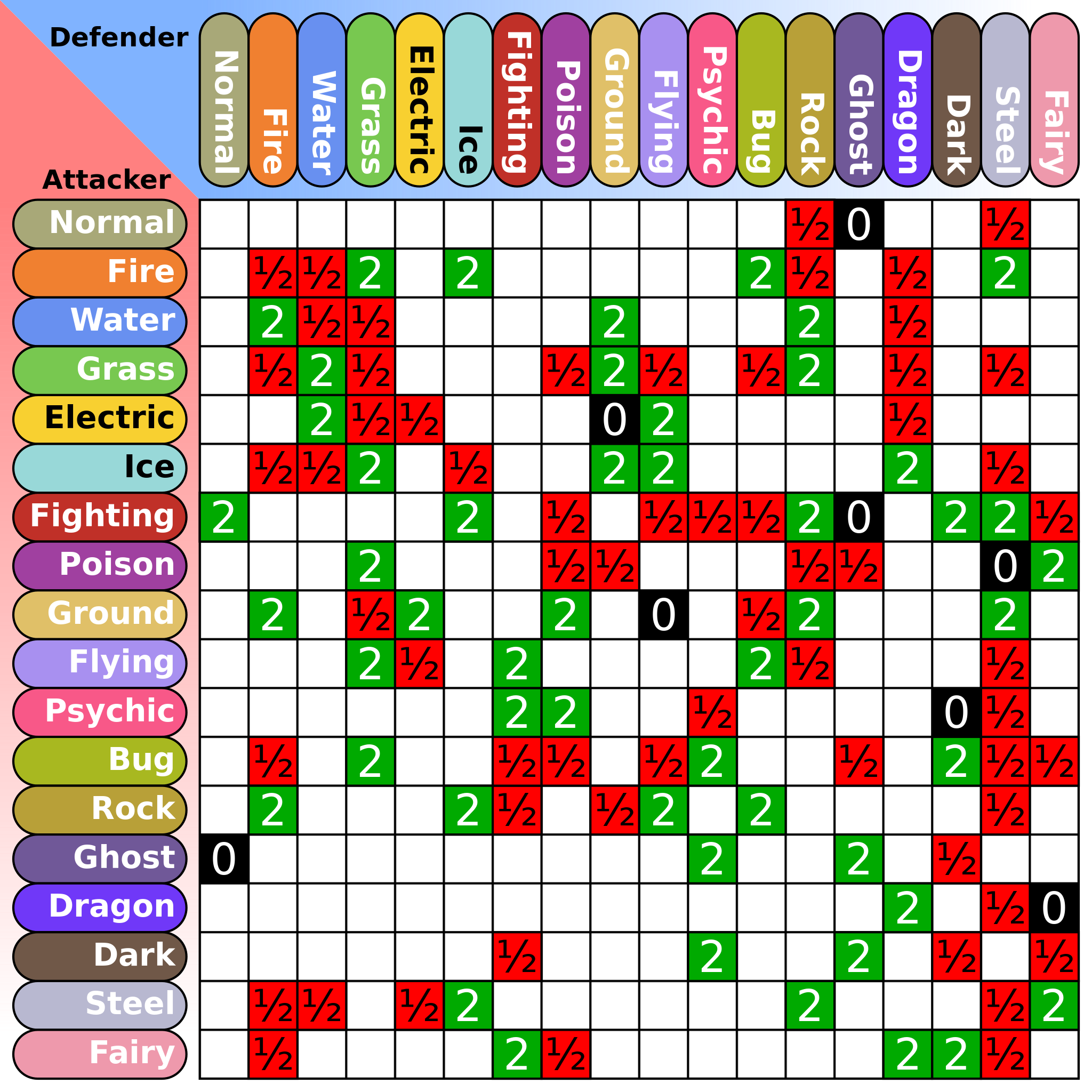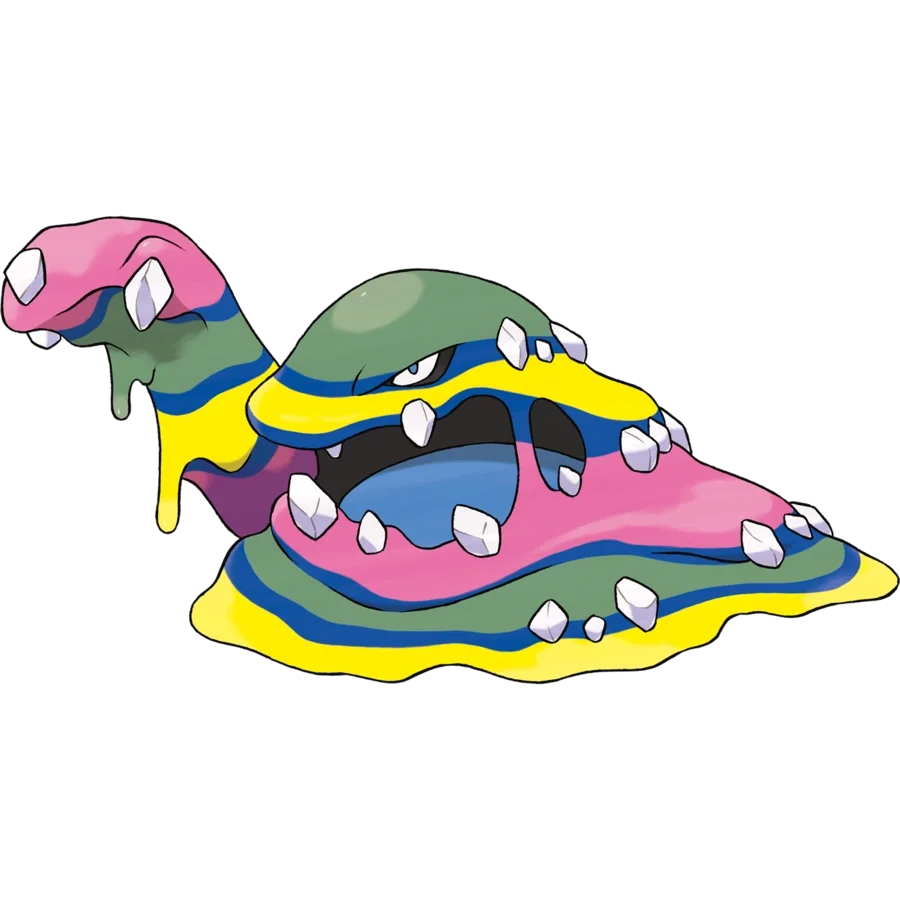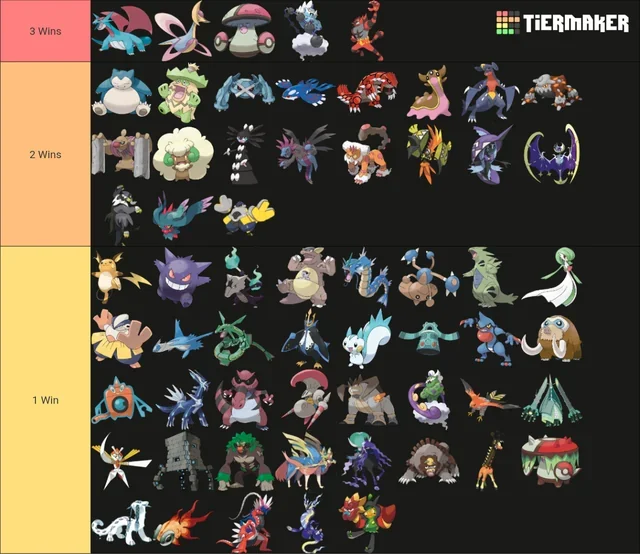My Favorite Pokemon Types and What They Say About Me (Maybe)
We’ve been covering stuff from my life too much lately, so let’s turn right back to Pokemon and talk about some of my favorite Pokemon typings. For those who don’t know, Pokemon come in all kinds of flavors or types that dictate their weaknesses and strengths. Originally, there were just 15 different types in the original games, but we’ve picked up a few more here and there and now we’re up to a whopping 18.
We’ll dive a bit more into the history of the types to give some background, but the main focus for why we’re here today is to talk about favorites. When it comes to Pokemon, there are many different species to choose from. 1025, to be exact as of the writing of this sentence. So it can be a little overwhelming when it comes to choosing who is going to form your party.
A good place to start, besides design, move set, and overall vibes, is a Pokemon’s type as that will influence the Rock, Paper, Scissors-esque strategy that comes from using said Pokemon to battle. Strategically, a Pokemon with fewer weaknesses will stand a better chance of securing a knockout without being knocked out in return.
This is why my favorite typing, Poison/Dark, only has one weakness and it is the best of the types hands down. I will be accepting requests to fight about this. Let’s begin.
A Brief History of Everything (Related to Types)
So, you’re unfamiliar with the types of Pokemon that exist and you want a quick rundown of all the different types that exist up until the present day. Well boy, do I have some good news cause we’re about to get into that right now. For any Pokemon Masters out there, feel free to scroll down to the next section, cause this is about to get very basic.
Every Pokemon has a type. Types give a Pokemon a basic identity in the battle mechanics featured heavily in these Pokemon video games. Some types have advantages over other types. Other types are weaker to different types. And so on.
To illustrate what I mean, let’s take a look at the starter Pokemon in the first game Red, Blue, and Green (depending on region). When a young boy (or girl) turns 10, they receive their first Pokemon partner. In the Kanto region, they are offered a choice of the fire type Charmander, the water type Squirtle, or the grass (and poison) type Bulbasaur.
Pictured: the depth of strategy.
This triangle of types has been the mainstay standard through the various generations of Pokemon games because they teach the importance of super effective moves that type advantage benefits you as a Pokemon trainer. Fire is strong against Grass. Grass is strong against Water. Water is strong against Fire. This weakness triangle is the basic building blocks for a lot of the strategy in Pokemon battles, but it gets way, way more involved.
Let’s take a look at the basic type advantage chart. This is one of many resources available to would be Pokemon Masters, so if the graphic stylings of this chart don’t gel with you, there’s many others to choose from.
Required reading, there will be a quiz.
Note that in addition to certain types being weak to others, types can also be resistant to others as well, giving them a defensive advantage instead of an offensive one. Understanding type matchups and knowing a Pokemon’s type can make the difference between glorious victory or crushing defeat. A type with no weaknesses would be very able to defeat any type that doesn’t resist it, resulting in the winning strategy being the same every single battle.
Steel and Dark type Pokemon were first introduced in the 2nd generation games, Gold and Silver, to curb the absolute beasts that Psychic types had evolved into during the course of the first generation of games due to the fact that Psychic types had no real weaknesses or resistances. Due to a programming bug and a lack of actual moves, the proposed weaknesses of Bug types and Ghost types did not fill in the niche of Psychic type defeater that they were supposed to.
Most bug type moves in those games were generally very weak or limited to Pokemon that also had a weakness to Psychic types by sharing a Poison type. The same went for the Ghost type Pokemon, of which there were three, and all of them also Poison type, thus sharing the same weakness to Psychic types.
This is the move set for the Bug type Pinsir in generation one. Note, it doesn’t learn a single Bug type move.
The resulting imbalance created a need to create new types to stop the overpopulation of Psychic types on the fledging competitive scene, thus we got a new complete immunity in Dark types and new resistance in Steel types.
A similar move was made in the fifth generation of Pokemon games, X and Y, with the introduction of the Fairy type to curb the overpopulation of Dragon types in the competitive scene, a very strong type that only had two weaknesses in the form of the very brittle Ice type and other fellow Dragon types (thus necessitating having Dragon types on your team to defeat other Dragon types).
My favorite type in general is still Dragon types to this day, despite their now glaring weakness in being completely ineffectual against the Fairy type with their same type moves.
Finding a Favorite Niche
Alright, now that we understand and know everything there is to know about types and their history, let’s discuss the interesting thing about Pokemon types. A large population of Pokemon have a dual type, meaning they are a combination of two types, like Bulbasaur that we alluded to earlier. When two types meet in a single mon, they share their weaknesses and their resistances, which can create some rather fun qualities.
Let’s take any of the Pokemon that share the typing Flying/Electric like Emolga, Zapdos, Pom Pom Style Oricorio, Thundurus, and the Kilowatteral family. Normally, the Electric type has only one weakness in the Ground type. Pairing an Electric type with the Flying type, however, makes it immune to these sorts of attacks while introducing a weakness to Ice type and Rock type attacks.
This thing is immune to earthquakes.
Is the trade off worth it? That’s debatable. Ground type attacks are some of the most common attacks in the competitive scene thanks to the Power and Accuracy of moves like Earthquake that are just insurmountable when it comes to knocking out your opponent. However, it’s novel that the introduction of a secondary type can change the way a type is played - you’re actively encouraged to switch an Electric/Flying type into a Ground type Pokemon since it would be immune in the case of a Ground type move being used, granting you a free switch-in.
These are the kinds of interactions that scratch a certain itch in the min-maxing portion of my very distracted brain. Optimizing weaknesses and strengths is just sort of a passion of mine.
Let’s take a look at another very fun combination of types in the Hiusian Zoroark line introduced in the Pokemon Legends: Arceus game. Normally, Zoroark is a Dark type pokemon that is weak to Fighting and Bug types. However, due to something in the ancient Hiusi region, Zororak becomes a Ghost/Normal type, completely shedding its weakness to Fighting by gaining an immunity to it while also avoiding one of the only weaknesses that the Ghost type has by being immune to Ghost attacks thanks to the Normal type secondary.
Truly, this is a masterpiece of a niche, especially paired with an ability that keeps your opponent guessing. For anyone unfamiliar, the first time in a battle you send out a Zoroark, it will take the form of one of the other Pokemon in your party. Align your party well and you can take the appearance of a Pokemon weak to Fighting type moves and have your opponent scratching their head when the move is completely ineffective.
I love situations like these, where Pokemon gaining a different typing completely changes the way you consider that mon’s role in a team thanks to the new opportunities afford it.
Running a Muk
So, Dark/Poison. I alluded to this being my favorite type and not without good reason, since it kind of is. Now, the Dark/Poison type isn’t exactly new to Pokemon. Generation 4’s Diamond and Pearl introduced two lines with this typing in the Skuntank line and the Drapion line, but for whatever reason I never really used either of them.
It wasn’t under the sixth generation game Sun and Moon and the introduction to Alolan form Pokemon that I was even intrigued by the possibility of using a Dark/Poison type. It all began with his smile. His stupid, irresistible smile.
At least I hope it’s smiling…
Meet Alolan Grimer and Alolan Muk, two Dark/Poison types that resemble a puddle of spilled oil. Grimer and Muk in the Kanto games don’t really have much going on for them. They’re another two pure Poison types in a generation filled with pure Poison types and where Psychic types reign without challenge.
If we refer back to our weakness chart, Poison types are weak to Psychic types. But here’s the kicker, Alolan Grimer and Muk gain the Dark typing and become completely immune to Psychic types. Even more, the Dark type is weak to Fighting type moves, but Poison resists Fighting, rendering these moves to hit for neutral or normal damage instead of being supereffective.
What we get is a Pokemon with only one weakness, the Ground type, that has an advantage over the Psychic types that would normally love to ruin its day. Throw in some coverage of the dreaded Fairy type (as Fairy type is weak to Poison), and my Dragons are roarin’ happy.
Of course, it’s not perfect. Ground is still the most oppressive move type in the competitive scene and that remains a problem for sure, but the fact that Alolan Muk, Skuntank, and Drapion only have one weakness and can hit pretty much everything else with no problem makes them my favorite type. Heck, Steel even lost its original resistance to Dark moves somewhere along the way, so they can literally hit the entire roster of Pokemon at least with neutral damage and that makes them unstoppable (read: they are not unstoppable, I just like them).
A Bigger PokePicture
Of course, Dark/Poison is not the only typing that only has one weakness. In fact, there are seven. Normal, Electric, Poison/Dark. Water/Ground, Water/Dragon, Bug/Steel, Normal/Ghost, and Ghost/Dark are the full contention of one weakness typings.
Here’s a list by someone at ScreenRant that details all the Pokemon who fit into one of those typings, if you’re curious.
But really, the one weakness thing doesn’t merit consideration for one’s favorite Pokemon typing. It’s just something that I value in a Pokemon if I’m going to be choosing from the roster of 1025 to fill out the six slots of my party.
Notice, I never really talked about favorite Pokemon throughout this article because when it comes down to it, your favorite Pokemon should have very little to do with utility or how well they perform in the overall competitive meta of the games. Truly, none of the Dark/Poison types really rank anywhere near what is considered to be “good” through that lens, and there are surprisingly very few Pokemon that are considered “good” when you break down things to their competitive juices. There’s only a handful of Pokemon that have won at the World Championship stage, for instance. I’ll put a graphic here below to demonstrate that, but you’ll see how narrow of a field we’re talking when it comes to serious competitiveness.
Not pictured: Any of my Favorites =(
So the moral of the story is just to use the Pokemon and the typings that you like. And I happen to like the Dark/Poison types because I value the strategic benefits that pairing offers. What does that say about me, really? I’m not sure, I’m evil? Cause, like, Dark and Poison are like the evil types. If we dole out moralistic values to the typings, that is.
Anyway, use the Pokemon that you love and don’t let anyone tell you otherwise and I’ll see you in the next article (not really, I can’t see through the website - that would be weird).





